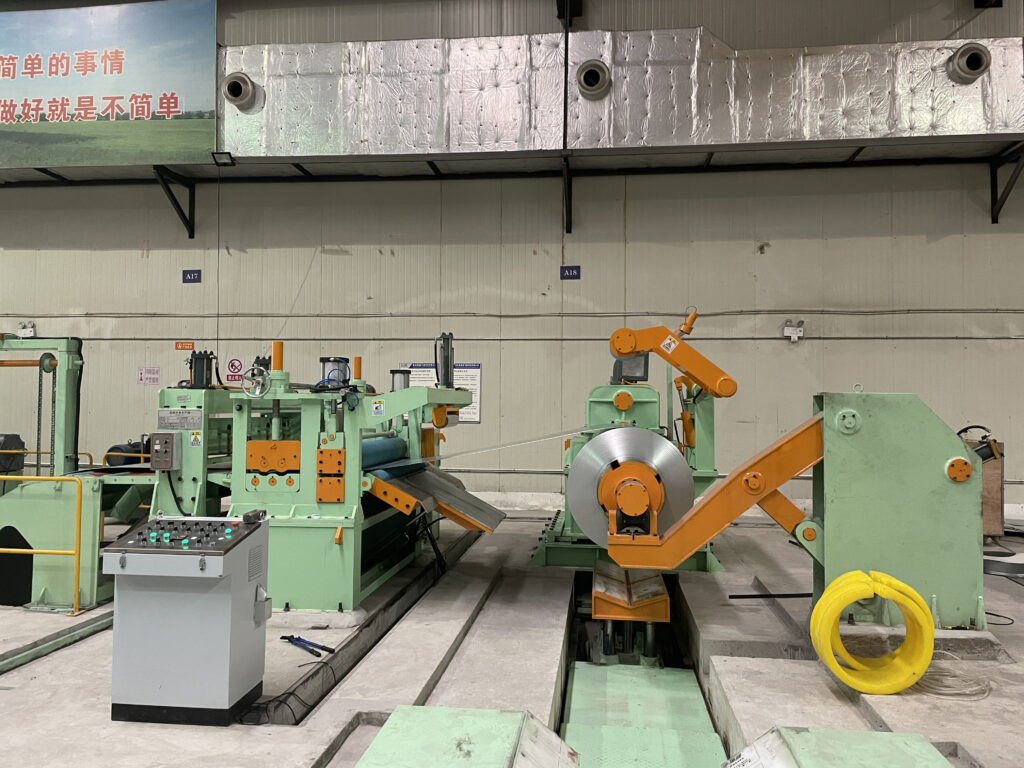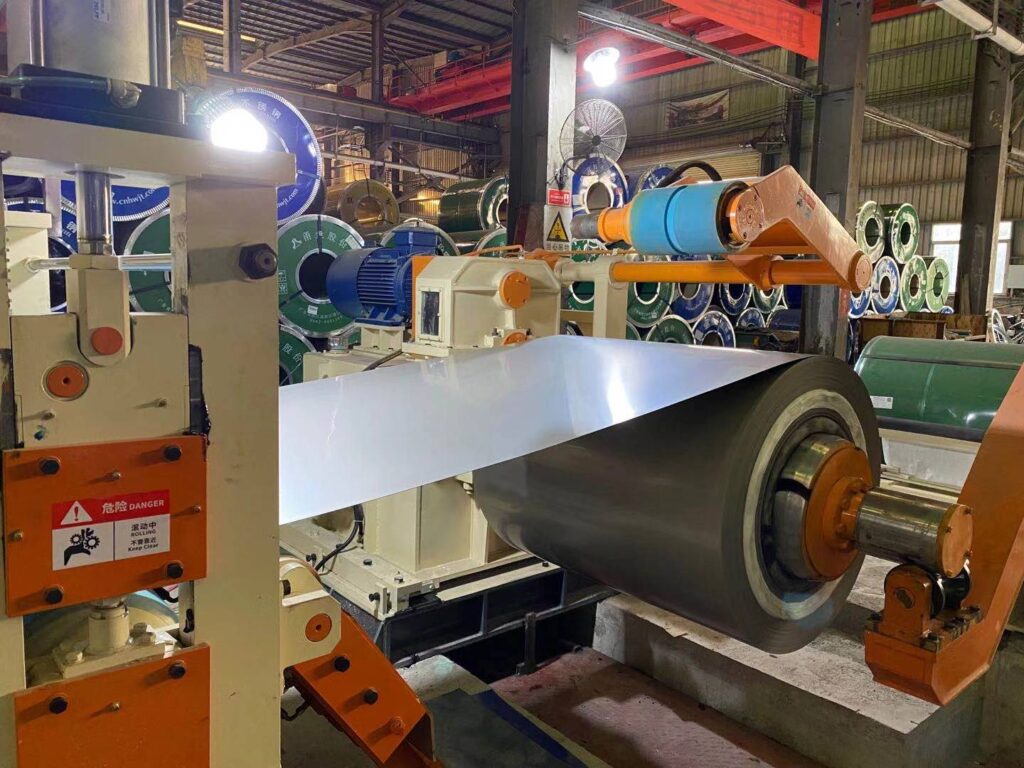What Is a Cut-to-Length Line?
Ready to enhance your metal processing? Contact MaxDo Machine for tailored consultations on cut-to-length solutions that drive your production forward.
In the demanding world of metal processing, a cut-to-length line stands out as a cornerstone for transforming raw coils into precise, ready-to-use sheets. These machines streamline operations for manufacturers handling everything from automotive panels to construction materials, ensuring high accuracy and minimal waste. Whether you’re optimizing production or evaluating new equipment, understanding the cut-to-length process is key to boosting efficiency in your facility.
How Does a Cut-to-Length Line Work?
The cut-to-length process begins with loading a metal coil onto the system, where it’s uncoiled and fed through a series of stations to produce flat sheets of exact dimensions. First, the coil is mounted on a hydraulic decoiler that unwinds it under controlled tension, preventing distortions as the material advances. A precision leveling unit then follows, using rollers to eliminate coil set—the natural curvature from rolling—and achieve flatness within tight tolerances, often as low as 1.5 mm per square meter.

Once leveled, the strip passes through measuring devices, such as servo-driven encoders, which track length with sub-millimeter precision. The material reaches the shear station, where a hydraulic or flying shear executes transverse cuts at programmed intervals—stop-and-go for thicker gauges or continuous for high-speed runs up to 25 meters per minute. Finally, the sheets are transported via roller tables to a stacking system, where pneumatic arms or magnetic lifters bundle them neatly for storage or downstream use. This automated sequence minimizes human intervention, reducing errors and supporting runs of thousands of sheets per shift.
Key Components of a Cut-to-Length Line
A robust cut-to-length line integrates specialized machinery tailored to material type and production demands. The hydraulic entry coil car positions heavy loads—up to 30 tons—safely onto the decoiler, which grips and rotates the coil mandrel to feed material steadily. Pre-levelers handle initial straightening, while the main leveling machine applies multi-roll pressure to correct internal stresses in alloys like stainless steel or aluminum.
Guidance systems, including side guides and loops, maintain alignment and tension, preventing edge damage during transit. The cutter, often a guillotine-style shear for heavy gauge (up to 25 mm thick), delivers clean edges with minimal burrs. Downstream, transportation tables and lifting platforms ensure smooth sheet handling, culminating in an automated stacker that adjusts for sheet sizes from 1,000 to 2,300 mm wide. Electrical, hydraulic, and pneumatic systems orchestrate the entire operation, with PLC controls enabling real-time adjustments for varying thicknesses.
For more on complementary equipment, explore MaxDo’s metal slitting machines that pair seamlessly with cut-to-length setups for full coil processing.
What Are the Advantages of Using a Cut-to-Length Line?
Investing in a cut-to-length line delivers measurable gains in productivity and quality for B2B operations. These systems handle diverse metals—cold-rolled steel, galvanized iron, pre-painted coils, copper, and stainless—across gauges from 0.2 mm to 25 mm, offering versatility without retooling. Speeds reach 100 m/min for thin materials, cutting cycle times by up to 50% compared to manual shearing and reducing labor costs.

Precision is another hallmark: length accuracy stays under 1.5 mm for boards up to 1,000 mm, with diagonal tolerances below 2 mm, ensuring compliance with standards like ISO 9001 in automotive supply chains. Automation features, including sensors for defect detection, minimize scrap rates to less than 1%, promoting sustainability in high-volume environments. Compact footprints—often under 92 meters long—fit into existing shops, while total power loads around 580 kW support scalable integration.
Compared to traditional methods, cut-to-length lines excel in efficiency. Here’s a quick overview:
| Feature | Cut-to-Length Line | Manual Shearing |
|---|---|---|
| Speed (m/min) | 15–25 (gauge-dependent) | 5–10 |
| Length Tolerance (mm) | ±1.5 | ±5–10 |
| Scrap Rate (%) | <1 | 5–15 |
| Operator Requirement | 2–3 per shift | 4–6 per shift |
Data sourced from industry benchmarks for medium-gauge processing.
Common Applications and Material Compatibility
Cut-to-length lines shine in sectors requiring uniform sheets, such as appliance manufacturing where pre-painted galvanized steel forms cabinet panels. In construction, they process hot-rolled coils into roofing or structural flats, while automotive fabricators use them for body stampings from high-strength alloys. For heavy industries like shipbuilding, heavy-gauge lines handle plates up to 12 meters long with edge trimming for clean finishes.

Material specs vary by line type: thin-gauge setups (0.2–2 mm) suit electronics, medium (2–4 mm) for HVAC ducts, and heavy (5–25 mm) for machinery bases. Stacking capacities reach 15 tons with heights up to 300 mm, accommodating widths from 1,000 to 2,300 mm. Learn how these integrate with MaxDo’s flatbed machines for paper and foil conversions in hybrid operations.
For foundational knowledge, see the Wikipedia entry on metal fabrication, which outlines broader processing techniques.
Choosing the Right Cut-to-Length Line for Your Needs
Selecting a cut-to-length machine involves balancing throughput, material specs, and ROI. Evaluate shear type—flying for continuous flow or stationary for precision on thick stock—and ensure compatibility with your coil weights (10–30 tons typical). Modern lines incorporate Industry 4.0 features like IoT monitoring for predictive maintenance, extending uptime by 20%.
Budget for customization: entry-level systems start at $500,000 for basic uncoil-level-cut-stack setups, scaling to $2 million for fully automated heavy-gauge lines with edge trimmers. Factor in warranties—often 10 years on core components—and after-sales support from reputable suppliers. For insights on maximizing efficiency, check MaxDo’s guide to CTL lines and multi-blanking lines.
Ready to enhance your metal processing? Contact MaxDo Machine for tailored consultations on cut-to-length solutions that drive your production forward.




